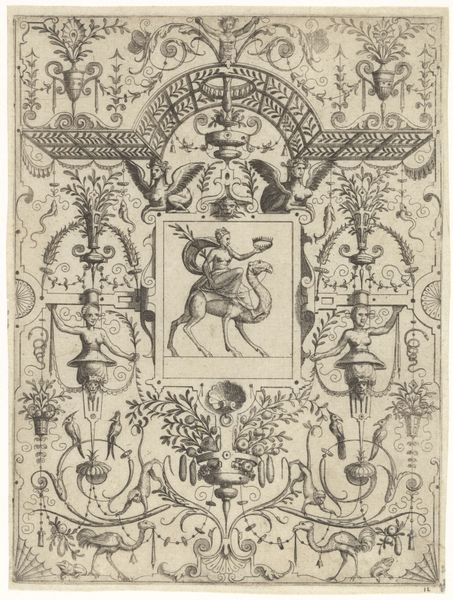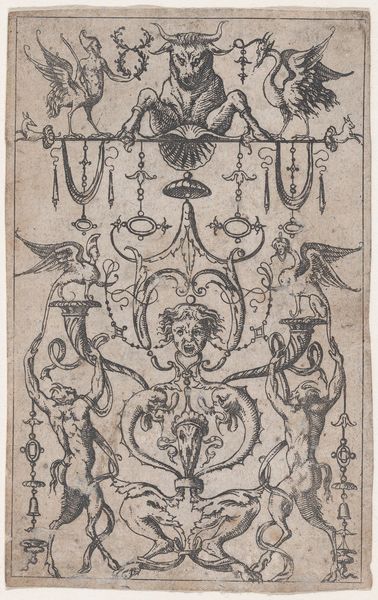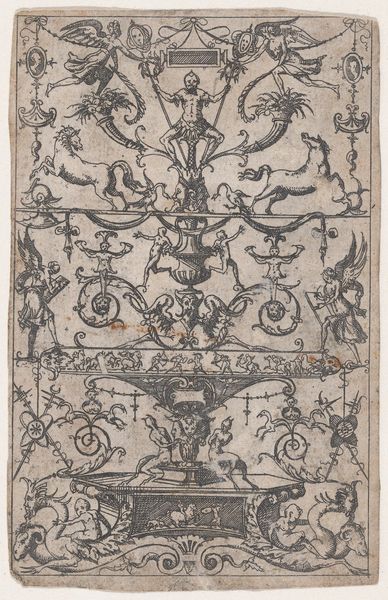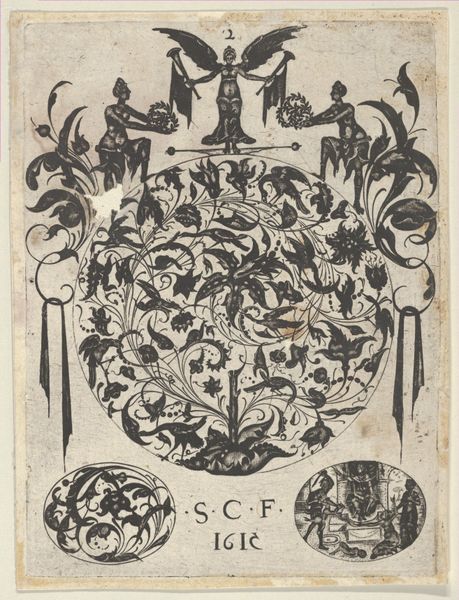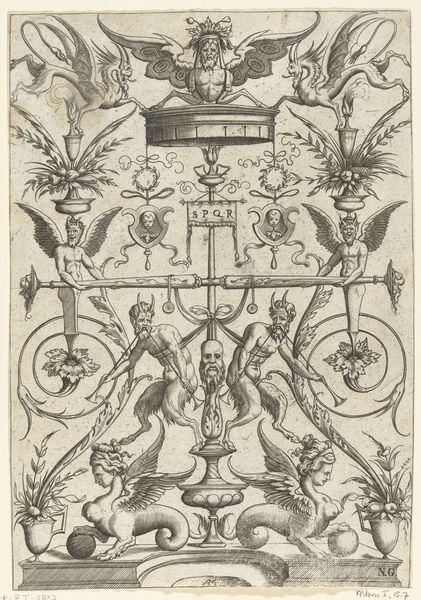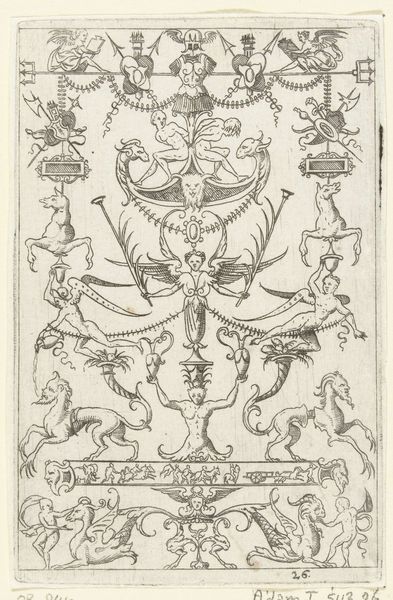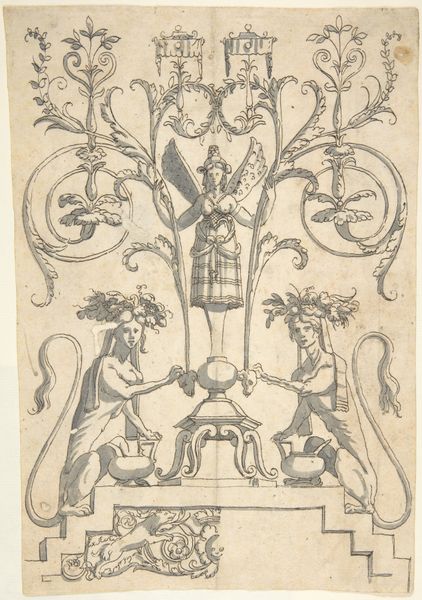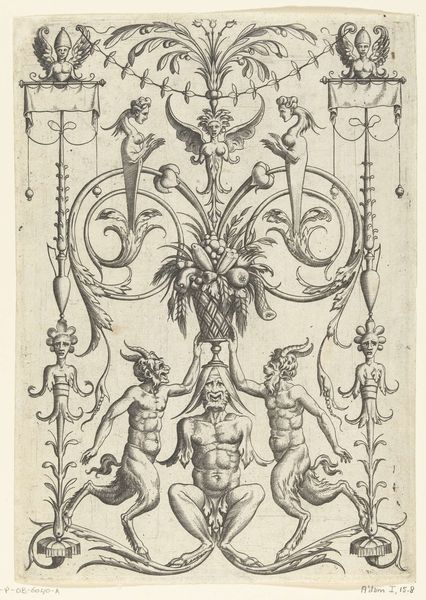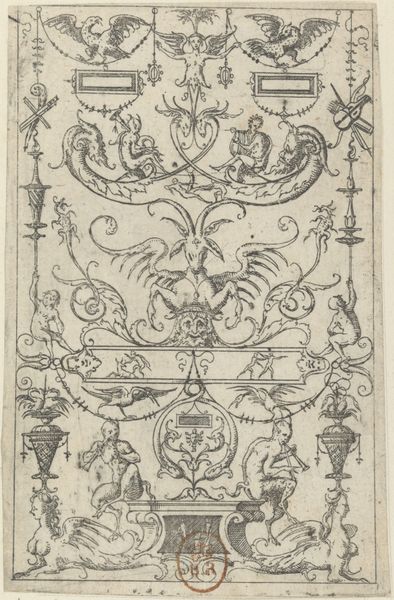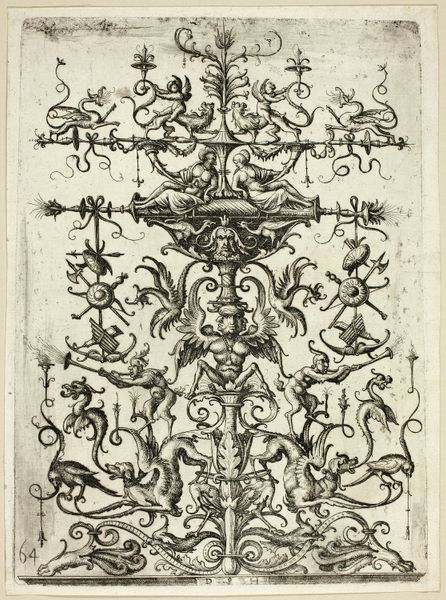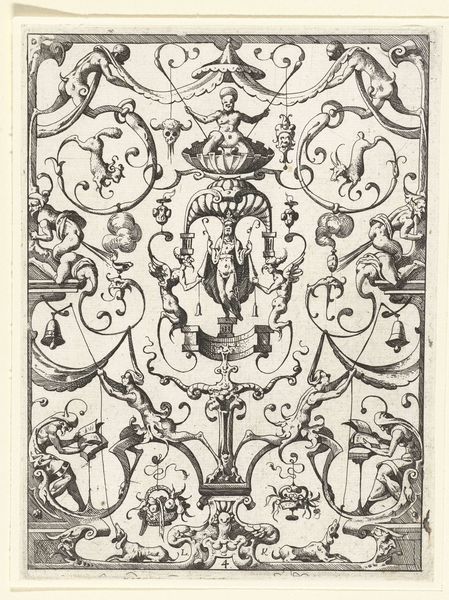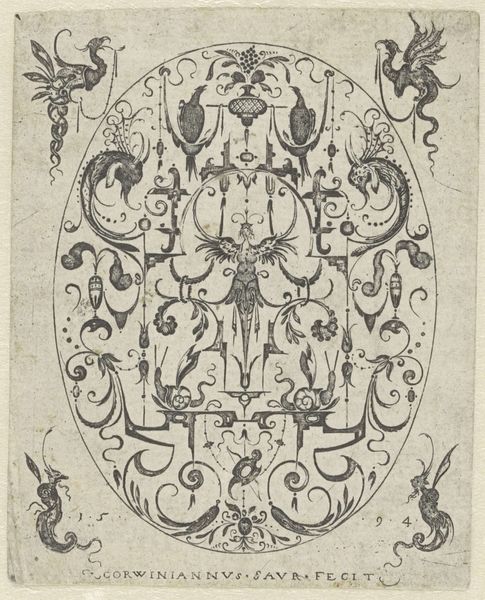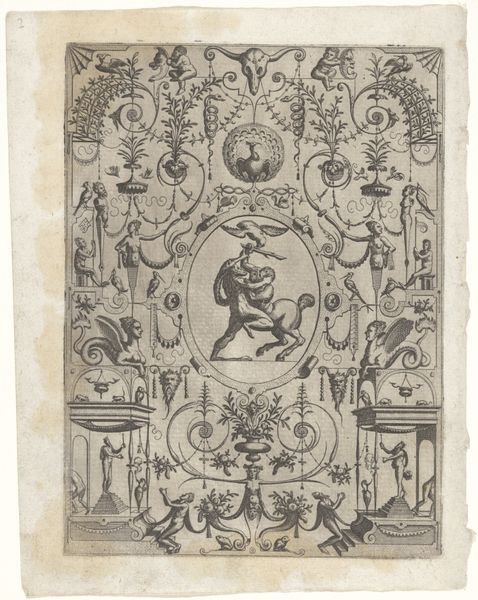
drawing, graphic-art, print, engraving
#
drawing
#
graphic-art
# print
#
mannerism
#
figuration
#
geometric
#
history-painting
#
grotesque
#
engraving
Dimensions: Sheet (trimmed): 4 1/8 × 2 3/4 in. (10.5 × 7 cm)
Copyright: Public Domain
Curator: This is “Grotesque Panel,” an engraving made around 1550 by Jacques Androuet Du Cerceau. It’s currently held in the collection of the Metropolitan Museum of Art. Editor: What strikes me first is the intricacy of the lines, almost like fine metalwork. It’s busy, dense with mythical creatures and architectural fragments. How was this achieved? Curator: It was an engraving, which involves cutting lines into a metal plate, applying ink, and then pressing it onto paper. Du Cerceau, working in the Mannerist style, was very interested in the grotesque, a style that was finding new audiences in print culture at the time. Editor: Yes, and the term "grotesque" itself speaks to its material history. Derived from the Italian word "grotta," referring to ancient Roman decorations found in underground ruins – so literally emerging from the earth! This style was ripe for reproduction. What function did it serve? Curator: It certainly reflects the aristocratic and intellectual culture of the Renaissance. Prints like this circulated amongst artists and patrons, who were fascinated with classical forms and mythology. They provided patterns, motifs, and decorative ideas that influenced architectural ornamentation, furniture design, and other applied arts. The availability of images also became about the power to create your identity through décor. Editor: I can see how this kind of detailed design would have become an aspirational object. It shows not just artistic skill but also the labor involved. It represents time, skill, and access to increasingly novel printing technologies. There's a strong connection to labor and value here, especially in the meticulous production required. Curator: It makes us question the politics of decoration, doesn’t it? While embracing fantasy and whimsy, the 'Grotesque Panel’ style affirmed a specific class position through its erudite classicism. Editor: Absolutely, the consumption of decorative arts says as much about our society as does their initial creation. Curator: A testament to art's capacity to both enchant and reflect social structures. Editor: Agreed, there’s nothing more interesting than objects that mirror the values – or perhaps anxieties – of their age.
Comments
No comments
Be the first to comment and join the conversation on the ultimate creative platform.
